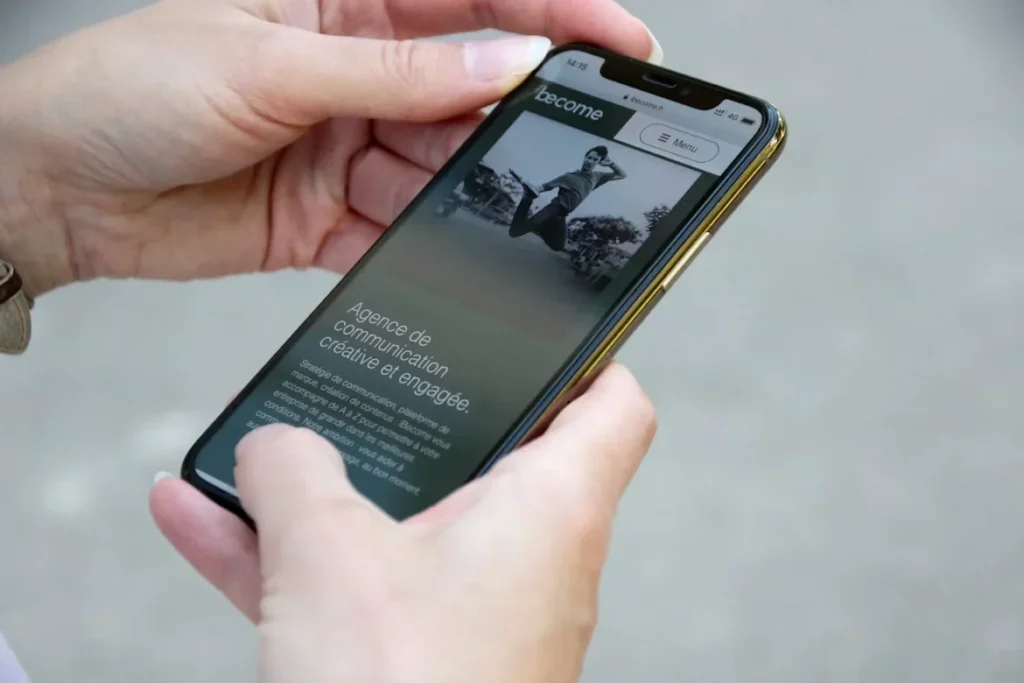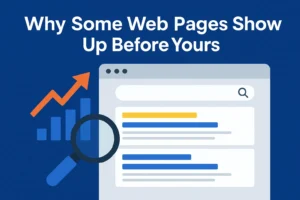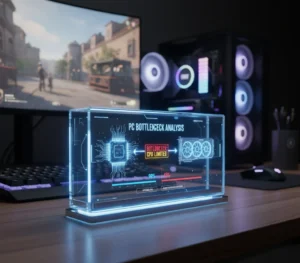A website is one of the most effective ways for a business to connect with both new and existing customers. Many websites get visitors, but not all of them can turn those visitors into sales or requests. That is why understanding the principles of web design is so important. Good design is not just about appearance; it’s about function, trust, and guiding people smoothly toward the actions you want them to take. It’s often the small details that make a site trustworthy, easy to use, and convincing that make the difference. Here are five secrets of good web design that will help you turn viewers into loyal customers.
1. Keep Navigation Simple

To make sure that the user has a positive experience, the menu should be simple to navigate. People don’t want to have to go through numerous options to receive straightforward information. When users arrive at a website, they typically have a purpose, whether it’s to learn more about a service, purchase a product, or contact the company. If the layout is too crowded or confusing, visitors quickly become irritated and often leave the site without further consideration.
If designers make an effort to keep things straightforward, the experience will feel more natural. Straightforward menus, logically organized groups, and an easy-to-spot search bar make a world of difference. Using descriptive labels instead of vague terms also helps guide users where they want to go. Remember, the less effort visitors have to put into finding what they need, the more likely they are to stay engaged and ultimately become paying customers.
2. Make Mobile a Priority

With that in mind, if your website isn’t suitable for mobile devices, the truth is that most people will not visit it. In the past, a website designed only for desktops was sufficient, but today, that is no longer the case. Mobile traffic now accounts for more than half of all internet usage, which means your design must adapt to smaller screens and touch navigation.
By enabling mobile-first design on your site, you can attract and retain customers who are using their phones, tablets, or computers. Responsive design assures your layout adjusts automatically to different devices. Images should be lightweight and adaptable; text should remain readable without requiring zooming; and buttons must be large enough for touch interaction. If the design is versatile, the pictures are flexible, and the webpage loads rapidly, it is simpler to keep purchasers interested in all possible ways. A mobile-friendly site isn’t just a convenience anymore; it’s a necessity.
3. Use Visual Hierarchy to Guide Actions

“Sign Up” or “Buy Now” are essential actions that can be accomplished by selecting specific elements through visual hierarchy, utilizing color, size, spacing, and layout labels. When elements are well-structured, the eye naturally moves to the most critical areas of the page. If these cues are missing or poorly executed, visitors may miss opportunities to advance to the next level in their journey.
There is a reduction in the shoppers’ level of uncertainty and an increase in their behaviour as a result of the eye’s ability to glide across the page. The proper solution is that even though calls to action are apparent, they are not pushy. Effective use of contrasting colours for buttons, bold fonts for headlines, and white space to highlight important content are all ways to achieve this. The more naturally your design guides people to act, the higher your chances of conversions.
4. Build Trust Through Professional Design

First impressions are powerful. An outdated, slow-to-load, or broken-link website loses credibility quickly. Visitors may turn and leave even before they see what’s on offer. In an age where competition is only a click away, users rarely give second chances.
Aside from that, professional design says something else. The clean visuals, dependable performance, and refined accents of the product convey a sense of trust and credibility. People are more likely to give their personal details or make a purchase if they feel confident in your site. An experienced and talented auckland web design professional can blend modern style with sufficient usability to create a site that is both comfortable for strangers and easy to navigate. From typography to spacing and even consistent branding, these elements combine to create trust at a glance. In short, your website is often the first impression you make on potential customers. It conveys a professional and reliable image.
5. Showcase Content That Drives Action
Design is nothing without content; content is what drives conversions. Great images, compelling headlines, and well-crafted product copy all help capture attention and communicate value. Without strong content, even the most beautiful website will fail to generate leads or sales.
By including reviews, testimonials, or case studies, you are adding another layer of trust by revealing real results. This kind of social proof reassures visitors that others have already benefited from your service or product. But when the design and content are integrated, the message becomes much more persuasive. Visitors not only see what’s on offer, but they also understand why it matters, and they’re comfortable asking a question or ringing in an order. Pairing strong calls to action with valuable, authentic content is the perfect recipe for driving meaningful conversions.
Turning Clicks Into Customers
It is not just about looking good; it is about how well it works and motivates people to action. A beautifully designed, correctly structured site pays off by attracting more target users and guiding them toward the desired outcome. After all, when used correctly, the site ceases to be just an online business card; it becomes an effective tool for converting users into customers.
Think of your website as a digital storefront. Just as a well-organised shop with clear signage and welcoming décor attracts more buyers, a well-designed website invites visitors to explore, trust, and make a purchase. The small details, navigation, mobile responsiveness, visual hierarchy, professional aesthetics, and persuasive content are what transform casual visitors into loyal customers. By applying these principles, you can make sure that your website not only exists online but also actively contributes to business growth.










